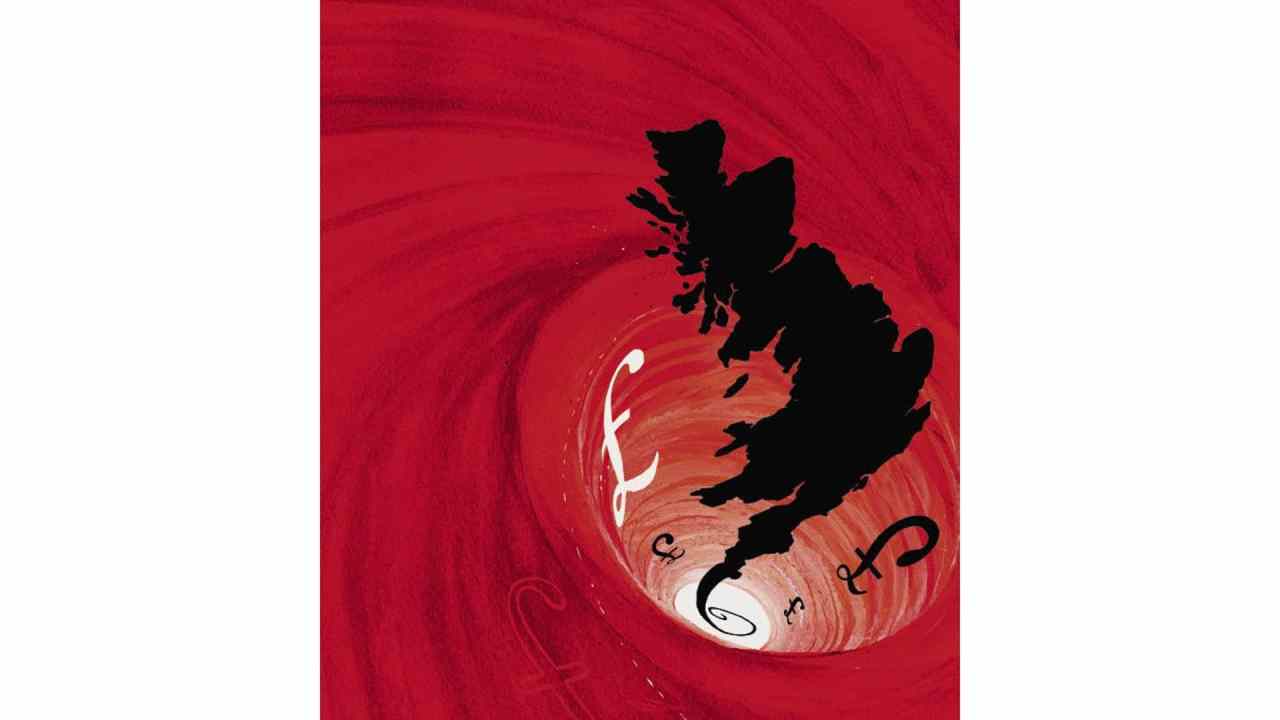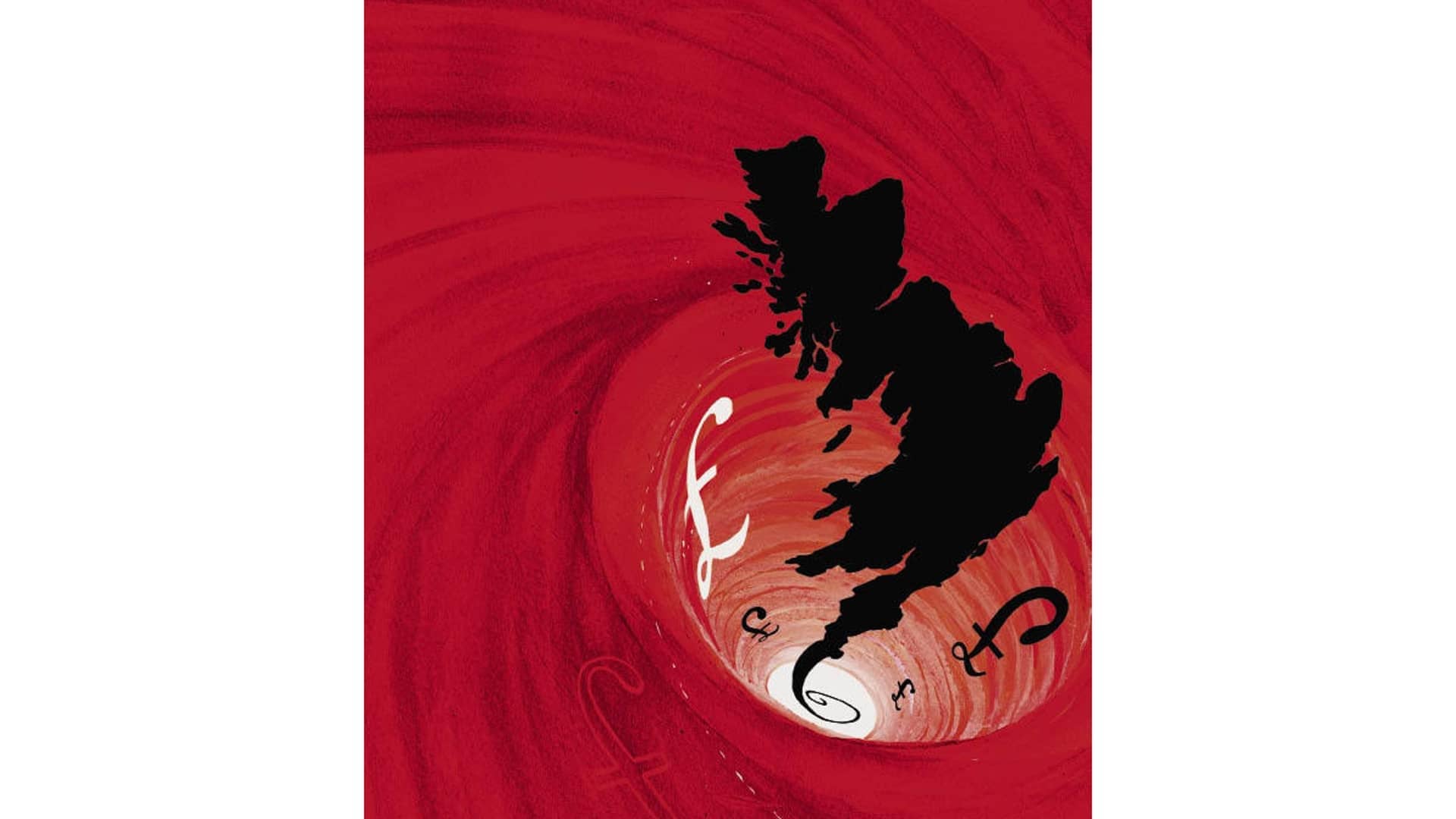After a weekend where the markets digested the Kwasi Kwarteng plan for growth, the pound hit $1.03 in early trading in Asia – the lowest rate since the dollar was invented in 1792. The fall was shortlived – it later rebounded to $1.07 – but the fact that it touched such a low at all has set off speculation that the Bank of England will stage an emergency intervention putting up interest rates by as much as one percentage point.
‘We’ve entered the part of the currency crisis where psychology takes over. That could mean the markets continue to test the Bank and the pound falls further, suggesting that the Bank has to have another go to assert its authority,’ said Paul Dales, Chief UK Economist at Capital Economics. Its actions, he says, could involve interest rate rising to 3.75 per cent imminently. ‘By bringing forward a lot of the policy tightening that might be needed to have happened anyway, the Bank would demonstrate in no uncertain terms that whatever the government does it will ensure that inflation returns to 2 per cent.’
The markets are already betting on this. Shorter-dated gilt yields are soaring and derivatives markets are pricing in a rise from 2.25pc to 2.75pc by the end of the week. The Bank of England is anyway behind the curve, having delayed its rate rise after the Queen’s death and last week raised rates by just 0.5 percentage points to 2.25 per cent. There had been speculation that it would take rates to 2.75pc given that the markets think they will need top keep on going to 5 per cent (see graph below). This is in the context of a worldwide increase in inflation and base-rate expectations. So there will be massive rate rises: the question is when, not whether.
But world market turmoil aside, the pound is taking a particularly hard beating. George Osborne, speaking on Andrew Neil’s Ch4 show last night, said the markets are punishing Liz Truss for failing to balance her budget. ‘Fundamentally, the schizophrenia has to be resolved – you can’t have small-state taxes and big-state spending,’ he said. The pound’s fall is part of a wider picture that we can expect to dominate the news this week.
Even without a budget, the pound hitting an all-time low would be big news. Since the first days of American independence, the exchange rate hung around about $5 to £1. That rate only fell in the last century and has fallen especially in recent weeks. The dollar is strong in general, with both the euro and the pound plunging against it.
But there’s another international post-Budget commentary worth mentioning: the verdict of the Wall Street Journal which says the real question is ‘why markets are reluctant to take yes for an answer’ and slates Andrew Bailey, Bank of England governor.
Every other central banker in the developed world would probably love to be in Mr Bailey’s shoes right now. As they have tightened monetary policy to combat inflation, they all beg their political counterparts to enact supply-side pro-growth policies to ease the recessionary impact of tighter money. Mario Draghi said it in every speech when he ran the European Central Bank. Mr Bailey has a Prime Minister who’s actually doing this, and all he can do is complain.
What was unusual about Friday’s budget was not just the size of the tax cuts – £45 billion, the biggest giveaway in 50 years – but the decision not to prepare the markets for this or say anything about how the public finances would later be put on an even keel. The Tories seemed to have moved from an extreme of being terrified by the markets (under Osborne) to casually declaring they’ll need £70bn and don’t really feel like explaining how they’re repay. Since 2010, reassuring the markets has been a job done by the Office for Budget Responsibility, but they were told to stay silent last week. All of this which to the feeling of the UK taking a leap in the dark.
Politically, such a leap has its advantages. It shows boldness and declares an end to the era where politicians have were scared of market reaction and ended up hemmed in by economists who collectively got so much wrong, from Brexit to inflation. But the speed with which Liz Truss has moved – she probably has 18 months to get results she can talk about in an election – means maximal demands on markets in combination with minimal explanation as to how her plan might work.. And yes tax cuts can spur growth. But you need to ask: how big is the tax cut? How much growth is it likely to induce? Especially with inflation taking away at least as much as most households get from tax cuts. And here we need to remember the depressing fact that Kwarteng’s tax cuts – which he hailed as the largest for half a century – just take us back to where we were… last year.
This speaks to the size of the problem he inherited: the unprecedented profligacy of Boris Johnson whose repeated and extended lockdowns saddled Britain with bills bigger than those faced by any other country. Sunak wanted to raise taxes to pay for the bills, Kwarteng wants tax cuts now and worrying later about how it will work out. As we say in this week’s leading article, we ought to be realistic about the net effect of a 2022 budget that reduces the tax burden to 2021 levels.
Perhaps the most important graph to keep an eye on will be the UK government borrowing costs. The main indicator is the ten-year gilt yield: this is what the interest rate markets demand in exchange for a ten-year loan. Again, these rates have been going up for countries the world over: the US and Germany have both seen graphs that look like the below. We’ll be working on The Spectator data hub this week for something that better disentangles UK metrics from woe on international markets (which were also in turmoil on Friday when the pound fell).
Kwasi Kwarteng is understood to be relaxed about this, saying that it’s best to see where markets are in four weeks’ time when they have digested it all. We’ll be keeping an eye on it, in real-time, at The Spectator data hub. It could look very different by the end of today.
Follow The Spectator’s data hub here for all the latest financial figures and more.








Comments